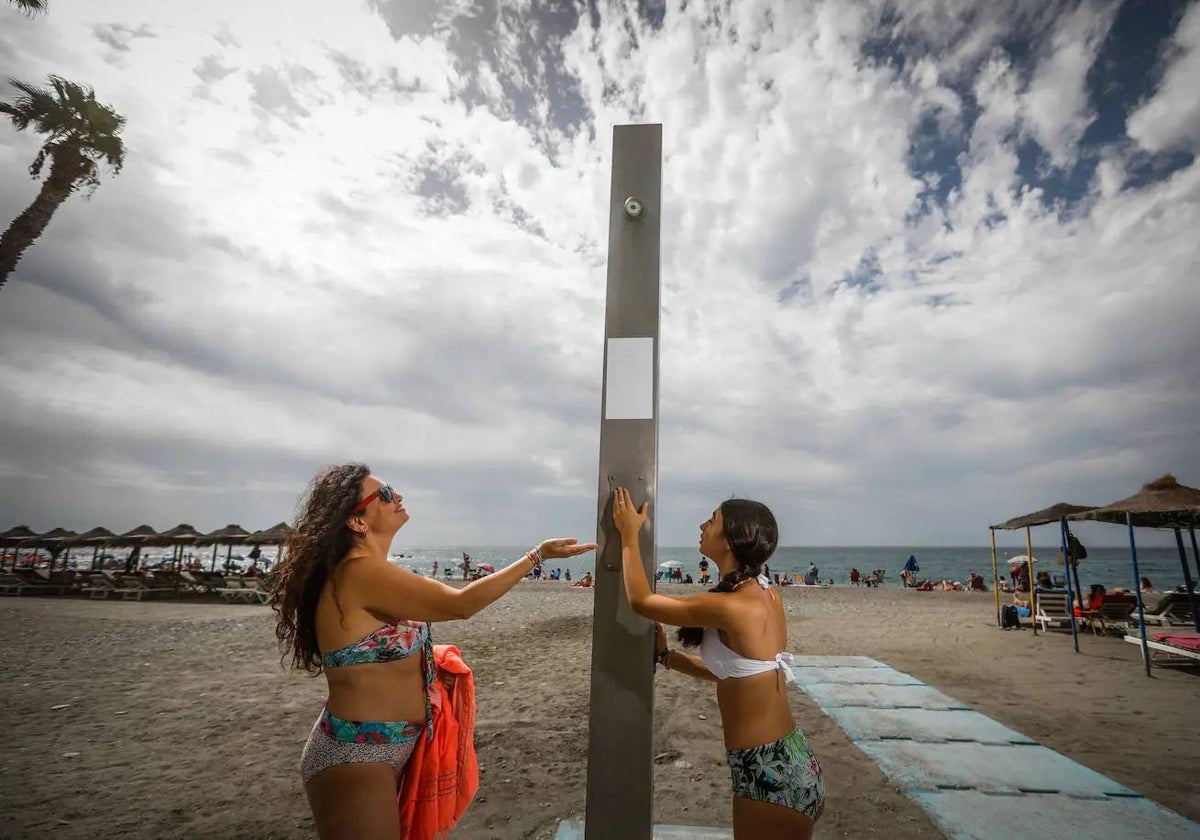Easter rain puts an end to water restrictions in 40 municipalities in Granada province
La Costa, Valle de Lecrín and La Alpujarra are back to normal after reducing their consumption by 5 per cent, although Salobreña will keep their measures in place
Pilar García-Trevijano
Granada
Wednesday, 10 April 2024
In just four days during Holy Week Granada province's reservoirs collected 35 cubic hectometres and in some parts of the province up to 500mm of rain were accumulated, when in the whole of the last water year which runs from October to October not even 300mm fell.
The runoff water is continuing to enter the reservoirs, permeate the aquifers and the snow of the Sierra Nevada provides another hydrological reserve for a hot summer.
The rainfall will not have been enough to put an end to the persistent drought affecting the province, but it is enough to make the restrictions more flexible and even end them in some places.
Alarming scenario
The Junta de Andalucía's drought management committee of the Mediterranean Basins met on Tuesday 9 April in Malaga to look at reducing measures. At the beginning of the year, the Andalusian regional government was facing an alarming scenario due to the lack of water.
It tightened restrictions on domestic and agricultural consumption and the Junta's decisions affected around 40 municipalities in the worst-hit parts of Granada province including the Río Verde Valley, the Lecrín Valley, the Contraviesa and part of the Alpujarra.
In February a maximum water consumption of 160 litres per inhabitant per day was imposed in some areas of Andalucía, affecting one municipality in the province of Granada, Zafarraya. Consumption was also limited to 200 litres per inhabitant per day in the upper basin of the Verde river, which includes the municipalities of Otívar, Jete, Lentegí and Salobreña, representing five per cent of their consumption.
Alpujarra and Lecrín Valley
In addition, the upper basin of the Guadalfeo river and in the Contraviesa, which includes municipalities in the Alpujarra and Valle de Lecrín in Granada also experienced a reduction of five per cent in daily domestic supply.
Other areas that were affected included Albuñuelas, Almegíjar, Bérchules, Bubión, Busquístar, Cádiar, Cáñar, Capileira, Carataunas, Cástaras, Dúrcal, Juviles, Lanjarón, Lecrín, Lobras, Nigüelas, Órgiva, Padul, Pampaneira, Pórtugos, Soportújar, Torvizcón, Trevélez, Vélez de Benaudalla, La Tahá, El Valle, Los Guájares, Villamena, El Pinar, Albondón, Albuñol, Gualchos, Lújar, Polopos, Rubite and Sorvilán. However, two months after these decisions, the Junta has eased the restrictions so that these towns and villages can return to normality.
The secretary general for Water, Ramiro Angulo, chaired the new meeting in Malaga to announce that the latest rainfall has allowed the Granada area to move "to a situation of normality" and the five per cent saving measure has been lifted.
Beach showers
Angulo took the opportunity to emphasise the need to understand that "the drought continues to be persistent" and that "therefore it is still necessary to save water and be prudent and responsible in its use". The current state of the province's reservoirs, which at the beginning of April store more water than last year, now reach an average of 45 per cent of their capacity.
The president of the Mancomunidad de Municipios association of town halls on Granada's Costa Tropical, Rafael Caballero stressed that despite this return to "normality", the Mancomunidad will continue with its information campaigns, while each municipality will have to decide whether to continue with some water saving initiatives such as keeping the beach showers turned off in summer. Furthermore, the Mancomunidad will continue to work to prevent leaks in its supply networks.
In Salobreña, for example, the town hall has indicated that for the time being it is considering a summer without beach showers. It considers that it is too early to end the measure which was agreed at the beginning of the high season. As the summer season approaches and if rainfall increases, the measure will be reconsidered.
Other town halls have said that they have yet to evaluate this new scenario. In the eastern area of the coast, which is fed by the Sierra de la Constraviesa reservoirs, the reserves are currently at 98 per cent of their capacity. For the mayor of Albuñol María José Sánchez the situation is not serious, but they hope that the rains will continue to guarantee water after the summer.
